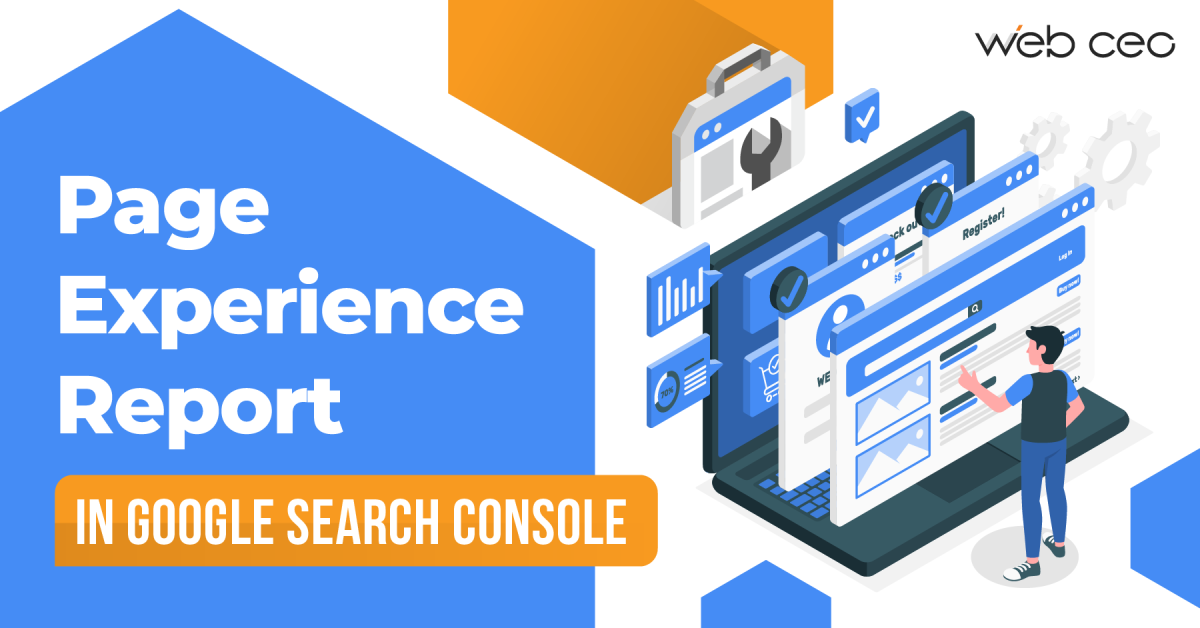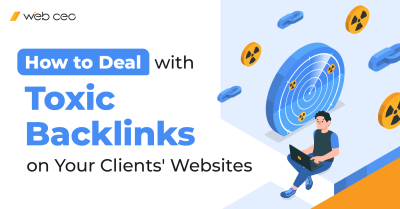
In the middle of 2021, Google unveiled “page experience” as a pivotal element in their ranking algorithm, underscoring the significance of user contentment and interaction with online pages. It includes many components influencing how users interpret and engage with a website. The primary objective revolves around giving precedence to webpages that deliver visitors a seamless, rapid, and captivating encounter.
Note: The page experience report will be changing in the coming months. Read this article to the end so you can take advantage of important updates that could critically impact the fate of your rankings.
Components of the Page Experience Report
The first thing you see when opening Page Experience Report in Google Search Console is two graphs that show you the approximate percentage of URLs that have both good status in Core Web Vitals and no mobile usability issues.
To understand these graphs and what they tell us, we need to understand Core Web Vitals.
Core Web Vitals: The Pulse of User Experience
Imagine Core Web Vitals as the heartbeat of your website’s user experience. The core web vitals include metrics such as Largest Contentful Paint (LCP), First Input Delay (FID), and Cumulative Layout Shift (CLS). These metrics act as health check-ups for speed, responsiveness, and the steadiness of your web pages.
Each component is a ranking factor and deserves a separate article, but let me tell you about them briefly and quickly.
Largest Contentful Paint (LCP)
Google considers the Largest Contentful Paint as a ranking factor. LCP entails gauging the time a webpage’s core material takes to conclude loading and become fully interactive for users.
The analysis focuses on the most significant image or content block in the user’s view. Components exceeding the visible screen area are excluded.
Typical elements scrutinized encompass images, video poster visuals, background graphics, and text sections like paragraph components.
First Input Delay (FID)
First Input Delay (FID) measures the time it takes for a web page to respond to a user’s first interaction, such as clicking a button, selecting a menu item, or tapping on a link. FID focuses on the delay between the user’s action and the browser’s ability to respond to that action.
Websites with low FID values provide a smoother and more engaging user experience. In contrast, high FID values indicate that users might experience delays and unresponsiveness, leading to frustration and negatively impacting the overall user experience.
Cumulative Layout Shift (CLS)
Especially noticeable on websites with dynamic content, Cumulative Layout Shift is the name given to the frustrating phenomenon of page elements suddenly shifting during the loading process, often resulting in an unpleasant user experience.
Anyone who has viewed a website with images, ads, or other changing elements has probably noticed buttons that move, text that jumps, or accidental clicks on links due to unexpected movements. Accidental clicks are a common occurrence on mobile devices, causing frustration among users.
Visual stability is scored on the CLS scale of 0 to 1, with better scores appearing at the lower end of the scale. A good range is seen with a CLS score of 0.1 or under, while anything above 0.25 is considered poor.
Other Important Factors of Page Experience
Now, you know 3 of 6 essential metrics that influence page experience and your website’s overall rankings. Let’s take a quick look at the other three factors.
Mobile Friendliness
A mobile-friendly website is one that provides a positive user experience on mobile devices such as smartphones and tablets. This means that the website’s layout, content, and features are designed to be easily navigable, readable, and usable on smaller screens and touch interfaces.
Mobile friendliness is essential because over 60% of all website traffic now comes from mobile devices. If your website is not mobile-friendly, you are missing out on a significant portion of your potential audience.
Remember, it impacts user satisfaction, search engine rankings, bounce rates, user engagement, conversion rates, and even social sharing. Ensuring mobile friendliness often involves using responsive web design techniques to adapt content dynamically based on the screen size, ultimately leading to a better overall page experience.
HTTPS
Imagine you’re sending a secret message to your friend. To make sure no one else reads it, you put it inside a special lock. Only your friend has the key to open that lock and read the message. When you visit a website with HTTPS, it means the website and your computer are talking in a secret code that only they understand.
Using HTTPS is of utmost importance for user experience and search engine optimization. It is a crucial component of Google’s Page Experience, positively impacting the overall user perception and interaction on a website.
Furthermore, search engines bestow higher rankings on HTTPS sites, enhancing their visibility in search results. Failure to implement HTTPS may result in browser warnings, deterring users and potentially increasing bounce rates.
For e-commerce, HTTPS is indispensable due to its compliance with security standards and the assurance it provides to users when making online transactions.
If your website still doesn’t have HTTPS, use Google’s guide to add it.
Intrusive Interstitials
Intrusive interstitials are these annoying big ads which you see on the webpages. They block what you’re trying to read or see on a website, and you have to wait for them to go away. It’s important to avoid them because they can be annoying and make it hard to enjoy the website.
Just like you want to watch your TV show without interruptions, people want to read websites without big annoying ads in the way.
By steering clear of them, you provide a smoother experience, better interaction, and improved page loading, which aligns with Google’s Core Web Vitals.
How to use Page Experience Report in Google Search Console
We now understand that the Page Experience Report tracks the quality of your sites based on these six metrics above. Let’s move to Google Search Console and see what we can do.
When selecting Page Experience, two graphs display the number of good and bad links on mobile and desktop devices.
Below the charts are two blocks displaying the number of links with Core Web Vitals issues.
Feel free to click on them
In the Core Web Vitals block, we can see all the links in three categories:
- Poor
- Need Improvement
- Good
Also, we see the timeline and can track when link problems began.
Below the graph, we can understand Why URLs aren’t considered good and see issues that we must fix.
When we click on an issue, a timeline graph appears. Below that, we can access the URL group with problematic pages. To learn more about URL groups, read this Google Guide.
Using information from the Core Web Vitals report, you can improve the Page Experience ranking factor and enhance the user experience of your website.
The last block of Page Experience is Mobile Usability. Clicking on it, you will see another graph that shows the number of usable links on mobile devices.
If there are any problems with your site, at the bottom, you will see why pages aren’t usable on mobile.
Prepare for changes coming in March 2024
We’ve told you all the current data regarding the Page Experience Report in Google Search Console, but there are changes ahead. One of them will be INP, which will replace FID as a part of Core Web Vitals in March 2024.
Note: Until then, INP is not a part of Core Web Vitals. Search Console reports INP data to help you prepare.
What is INP?
INP (Interaction to Next Paint): A metric that assesses a page’s overall responsiveness to user interactions by observing the time that it takes for the page to respond to all click, tap, and keyboard interactions that occur throughout the lifespan of a user’s visit to a page. The final INP value is the longest interaction observed, ignoring outliers.
Conclusion
The metrics we’ve explored – Core Web Vitals, mobile-friendliness, security via HTTPS, and the battle against intrusive interstitials – are your trusty allies.
Remember that the Page Experience Report isn’t just a static tool; it’s a roadmap to optimization. Monitor, analyze, and adapt as you march toward a site that not only wows visitors but also secures its place in the ever-competitive search engine arena.
Stay tuned for the upcoming transformation in March 2024, where Interaction to Next Paint (INP) steps into the Core Web Vitals spotlight.


